The Evolution of RankTrackr into Nightwatch
It’s been 4 years and 57 days since we launched RankTrackr, our pioneering SEO tool. Back then our skills and our views on the SEO game were somewhat different, yet the goal we wanted to accomplish has remained the same.
We created RankTrackr because we needed better ways of measuring our SEO performance. We needed a tool that wouldn’t just provide us with genuinely representative and accurate insights into our ranking change, but would also allow us to access the data more efficiently. RankTrackr quickly gained recognition among SEO professionals and became one of the popular rank tracking tools in the industry. But the times are changing, so does the SEO game, and those who are eager to stay on top of it must keep up.
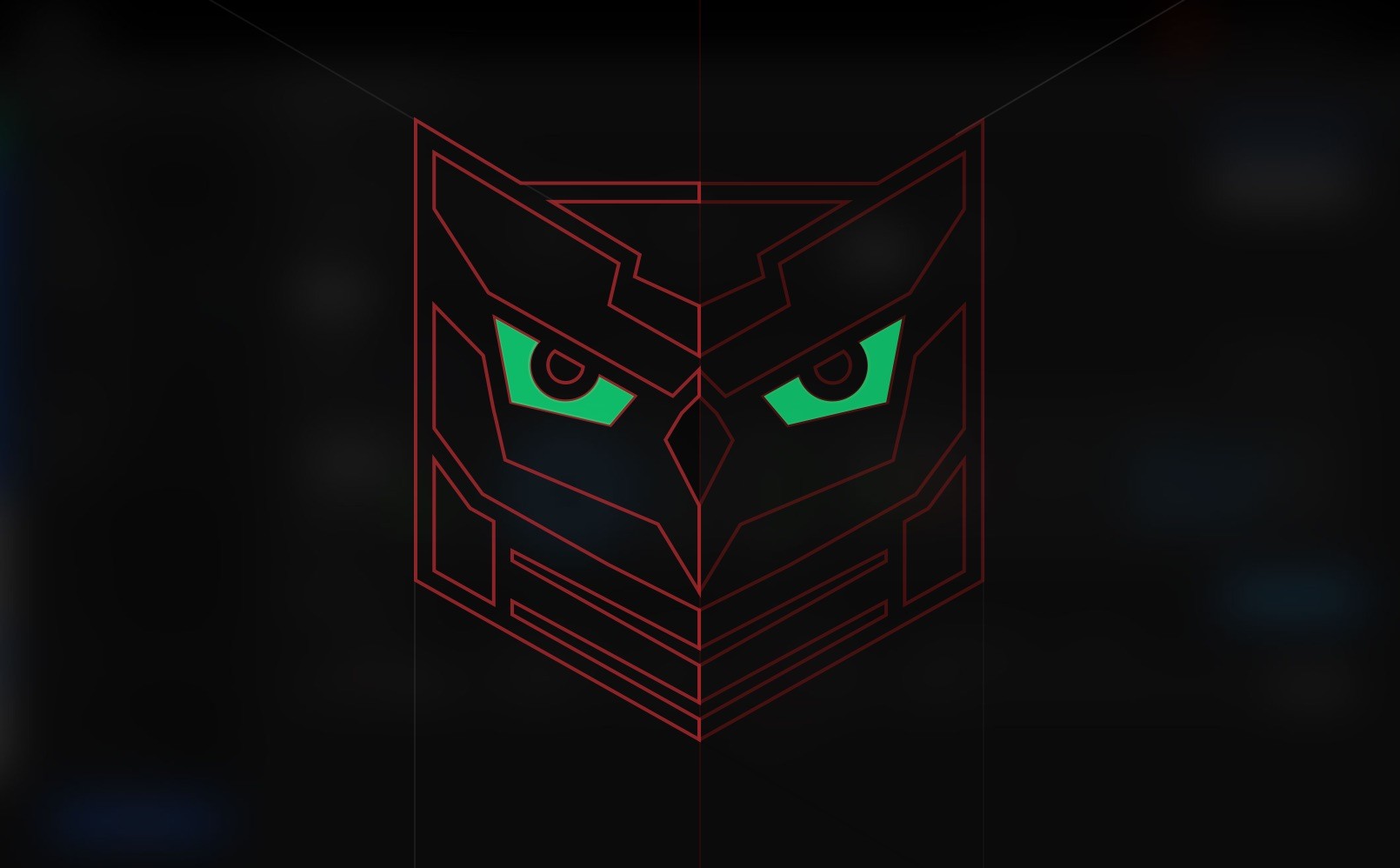
Today, the world of online marketing is evolving more rapidly than ever. The so-called “future visionaries” love to question the future of search engines, while being easily turned on by any hipster-candy word, such as “growth hacking” or “market fit”. In the meantime, the search engine traffic remains the top source of the most quality and easily convertible traffic. The way search engines work hasn’t really changed much over time, but the way we understand SEO and take advantage of it certainly has.
The development of technology and concepts has driven us, the consumers, to look for tools that can help us accomplish a broader range of tasks. We observe the same pattern in the history of humankind and the evolution of the Internet. If 5 years ago a tool that automatically tracks your website positions in Google was considered worthwhile, today you would expect of the same tool to offer much more functionality.
As we move on, we come to recognize that constantly adding new features and making your tool increasingly complicated won’t make it great. It’s the ability to grasp similarities between different tasks and their goals and conceptualizing them into simple and abstract functionalities and approaches is what should drive the development team forward.
Expanding our reach, we design thoughtful solutions that seek to merge simplicity and flexibility.
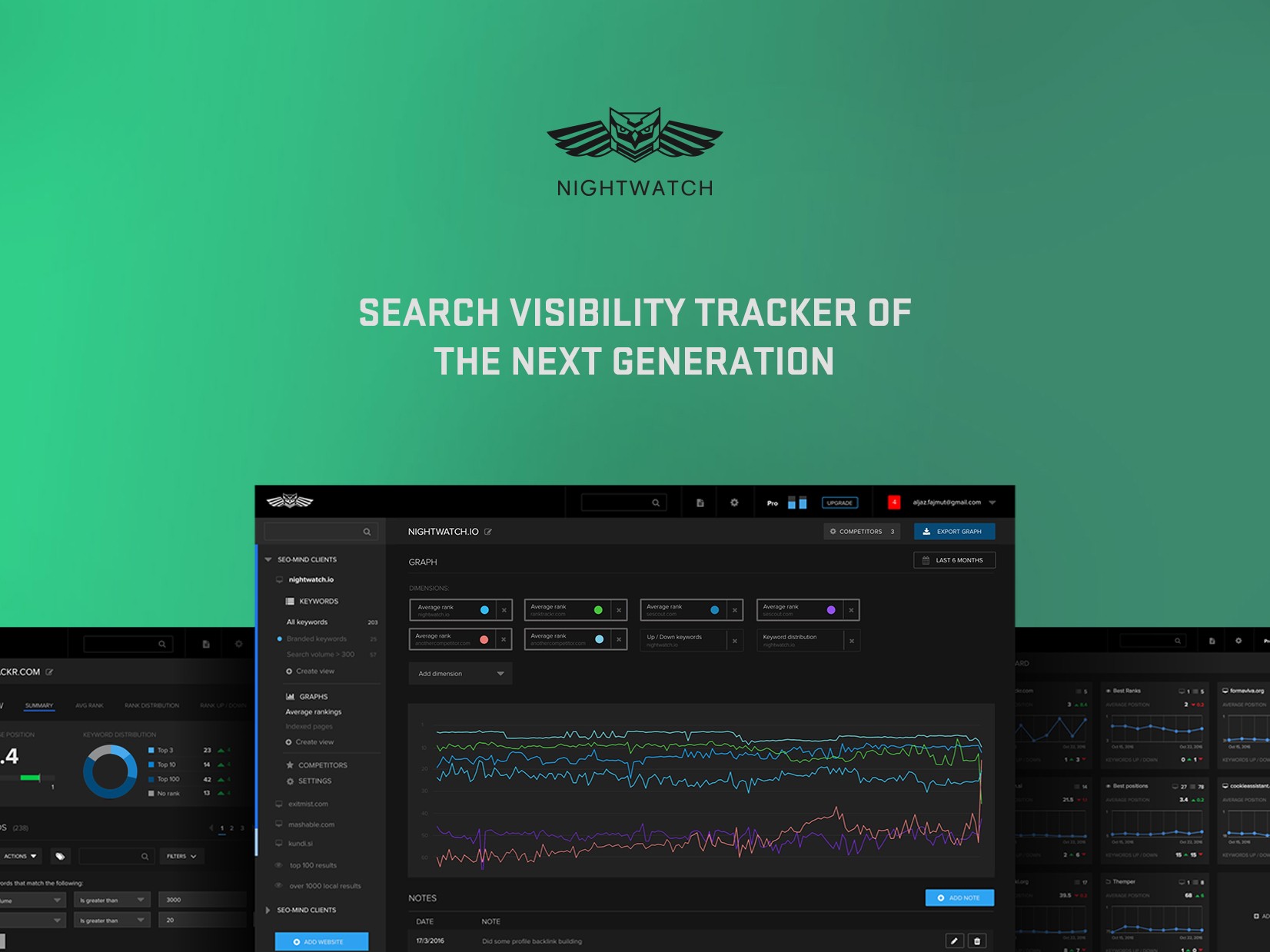
It is with this approach in mind that Nightwatch allows you to dig deeper into the aggregated data and discover unexplored opportunities. For example, you can easily find out how search engine traffic correlates with particular changes in keyword rankings and CTRs on your SERP. Armed with this powerful tool, you will be able to make sense of all the factors that affect your website’s search engine performance and take action.
So, let’s see how RankTrackr evolved into Nightwatch - a search visibility tracker.
Becoming more site-oriented
When we created RankTrackr, we wanted to make it easy to use for multiple small to medium-size websites (blogs and ecommerce stores, affiliate sites, sites of our clients), we were optimizing back then. While flexibility for tracking multiple, unrelated web properties was ahead of its time, we started noticing that this somehow became a little limiting as our business and clients evolved throughout time and as their websites grew bigger.
The problem with the old solution was that it wasn’t specialized for tracking websites and properties with high-volume data sets. For this reason, we re-thought the architecture and logic around the tool, and made it easier and friendlier to track small or big websites with either 10 or 100,000 keywords, on multiple search engines.
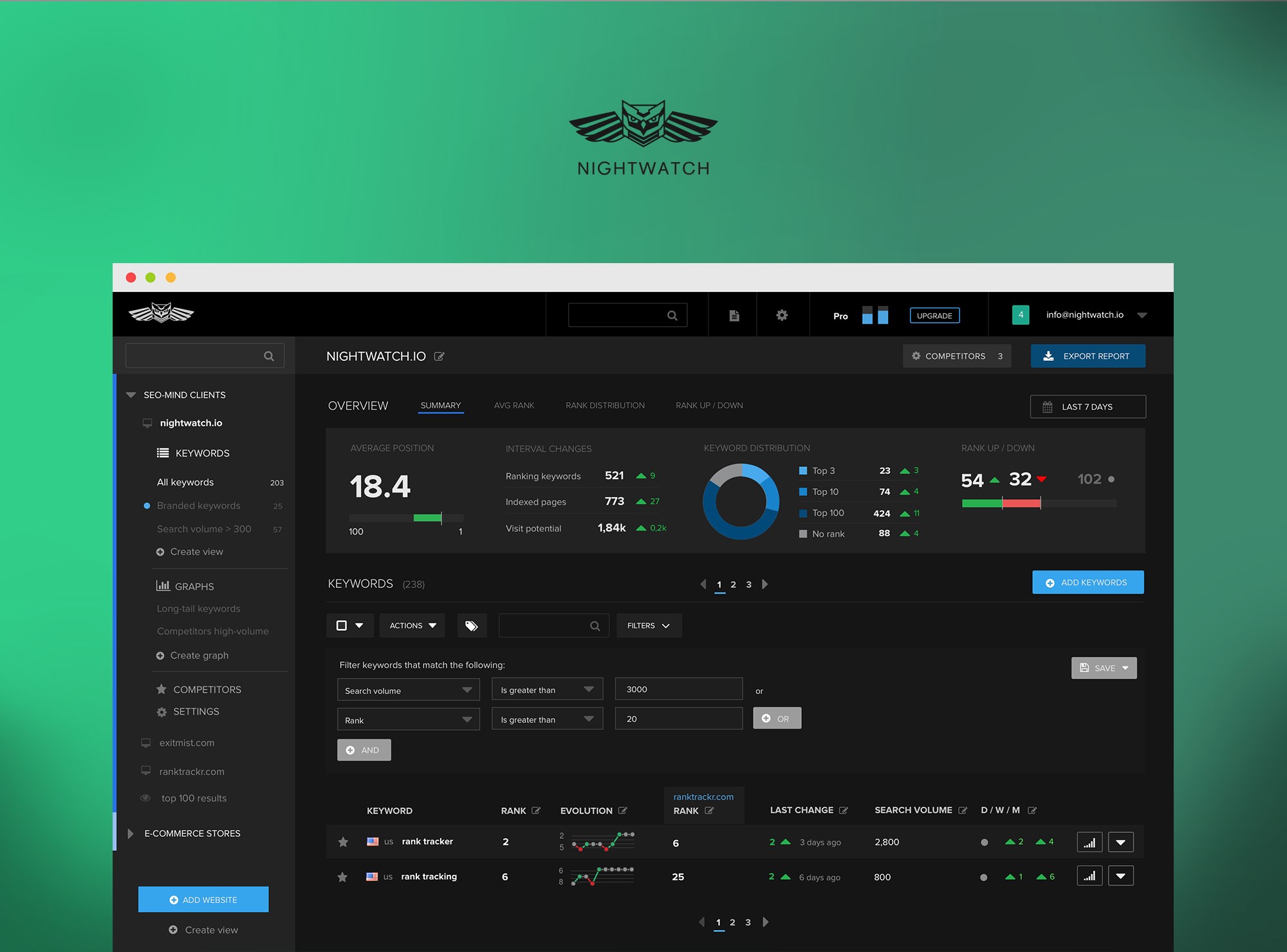
Nightwatch removes these limitations, and is by far the most flexible for tracking websites or URLs of all sizes, while still supporting the ability to switch between different websites or URLs within the tool, easily and quickly. We never wanted to waste time by navigating within the app to find particular information.
Becoming an enterprise-oriented tool
While basic rank trackers usually do the work, they lack flexibility when it comes down to drilling deeper into the tracking data. For example: if you have a bigger website for which you’re tracking 30,000 keywords across different search engines.
Making the ranking calculations, such as average position on the whole data set, isn’t really wise, especially when compared to your competitors.
Normally you will also be tracking branded keywords, and you don’t want those keywords to affect and pollute your overall results allowing them to become misleading by comparing this data with your competitors.
Nightwatch makes it easy to group keywords together into a special property we call “view”. A view can consist of any keyword properties, including their tags, behaviors, analytics, or ranking properties.
You can set it up with a filter:
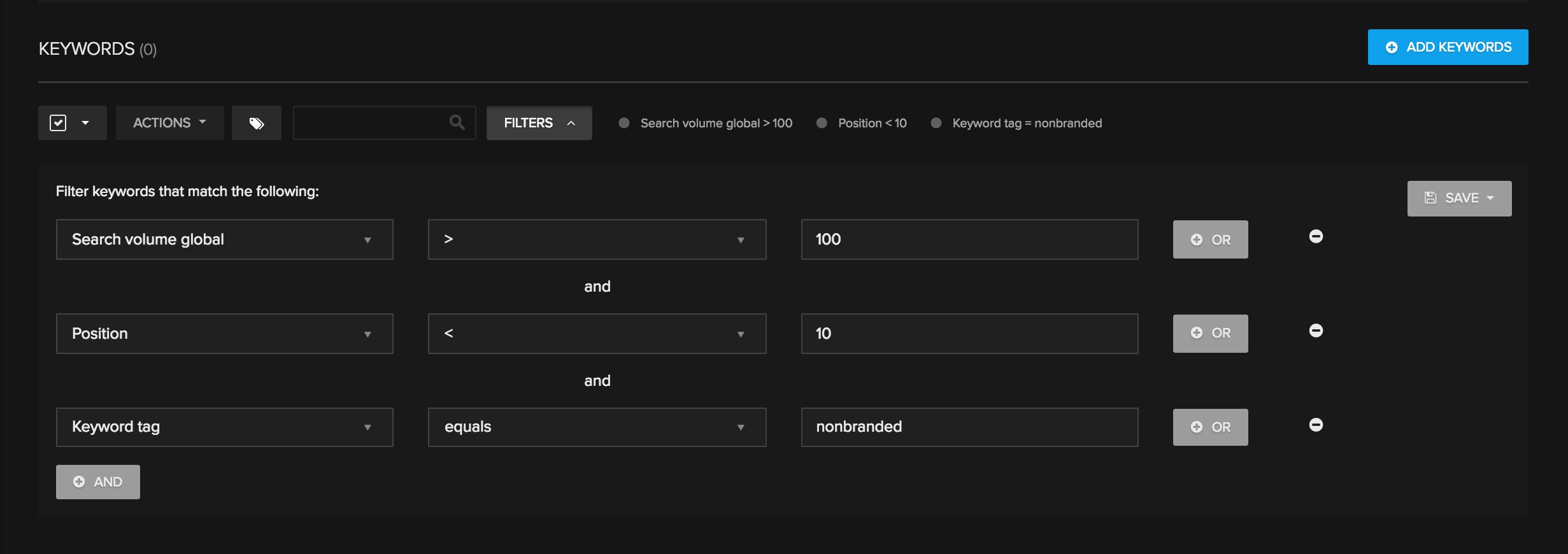
Some examples of keywords views:
- All keywords with monthly search volume > 3000
- All keywords tagged with “branded”
- All keywords tagged with “products”
- All keywords tagged with “listings”
With that, you could create even narrower groups, for example:
All keywords tagged with “products” that rank on the 1st page and have search volume greater than 30 monthly searches.
This becomes extremely useful as you can start becoming aware of how a particular subset of keywords affects your site traffic, and compares with your competitors. It is very powerful.
Next-level data aggregation
Our old tool was the first, which introduced the ability to track Google snippets - local places, map listings, and image carousel, among organic results.
Besides all the rich keyword ranking information, competitor rankings, and Adwords information, Nightwatch also integrates with your Google Analytics and Search Console accounts (the old pals Google Webmaster Tool) for better visualization and presentation of the data.
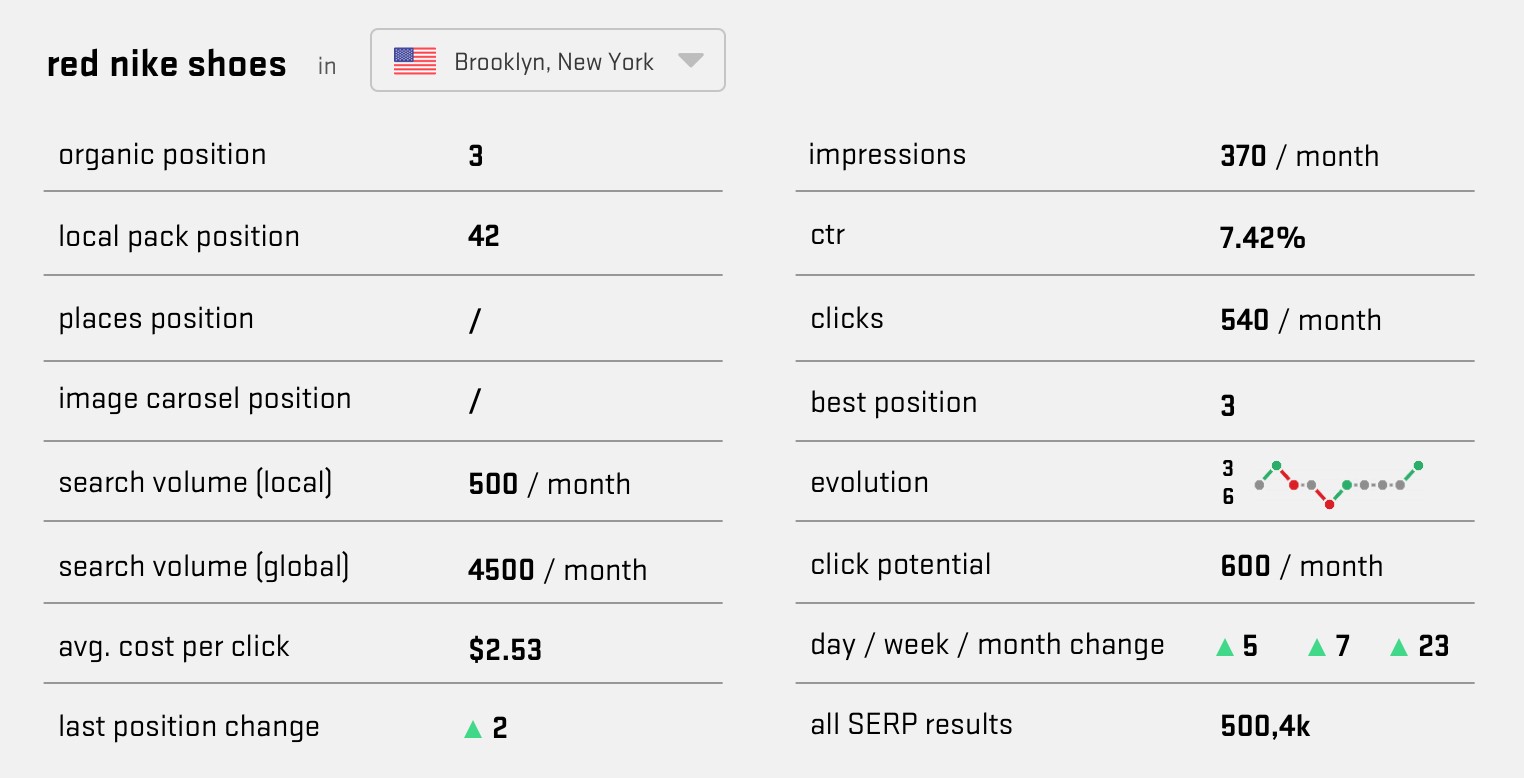
This process makes it easier to spot the correlations between rankings and your site traffic, and appearance on Google. The data provided from Search Console can be very handy when estimating your used and unused website search traffic potential.
Visualizing like never before
Visualization was always the bread and butter of any analytic tool, so the visualization capabilities pretty much determine the strength of the tool. With Nightwatch, we wanted to take visualization capabilities to the next level and make it as flexible as possible.
We invented a special concept called “graph views” (similar to keyword views, but instead of tables, you are dealing with charts), which allow you to choose any numerical metric that our tool is aggregating or tracking and visualize it on the same graph.
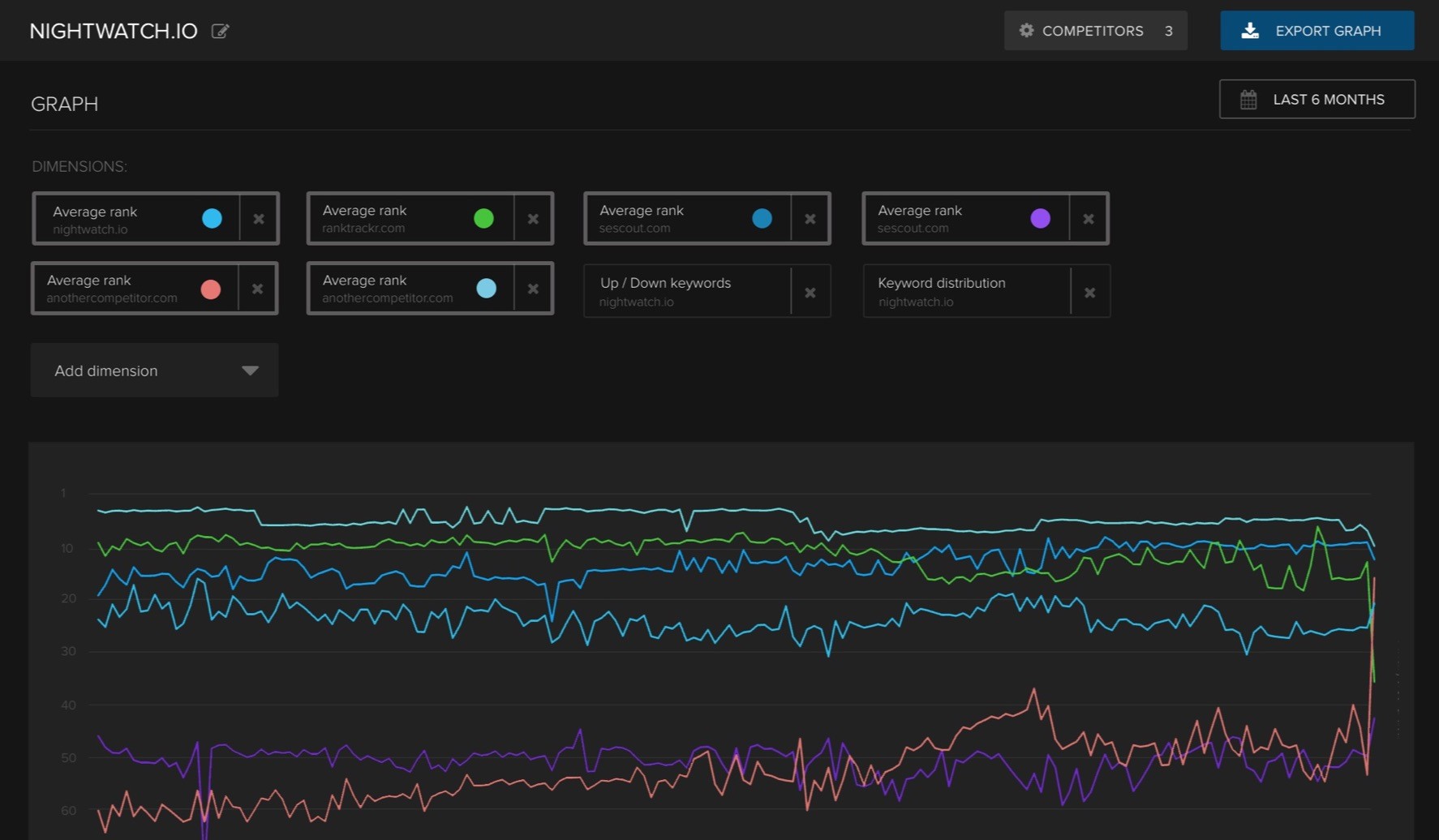
This means that you can put practically anything you want on the same graph, which makes it easy to spot patterns across different small or large data sets. For example: you can visualize keyword rankings, competitor rankings, keyword impressions or CTR (Search Console), visits or sessions (from Google analytics), on the same graph. Or for example visualize how search visits on your site correlate with your click potential, which can be a great indicator if you should work more on your meta description and title to improve the CTR to your site.
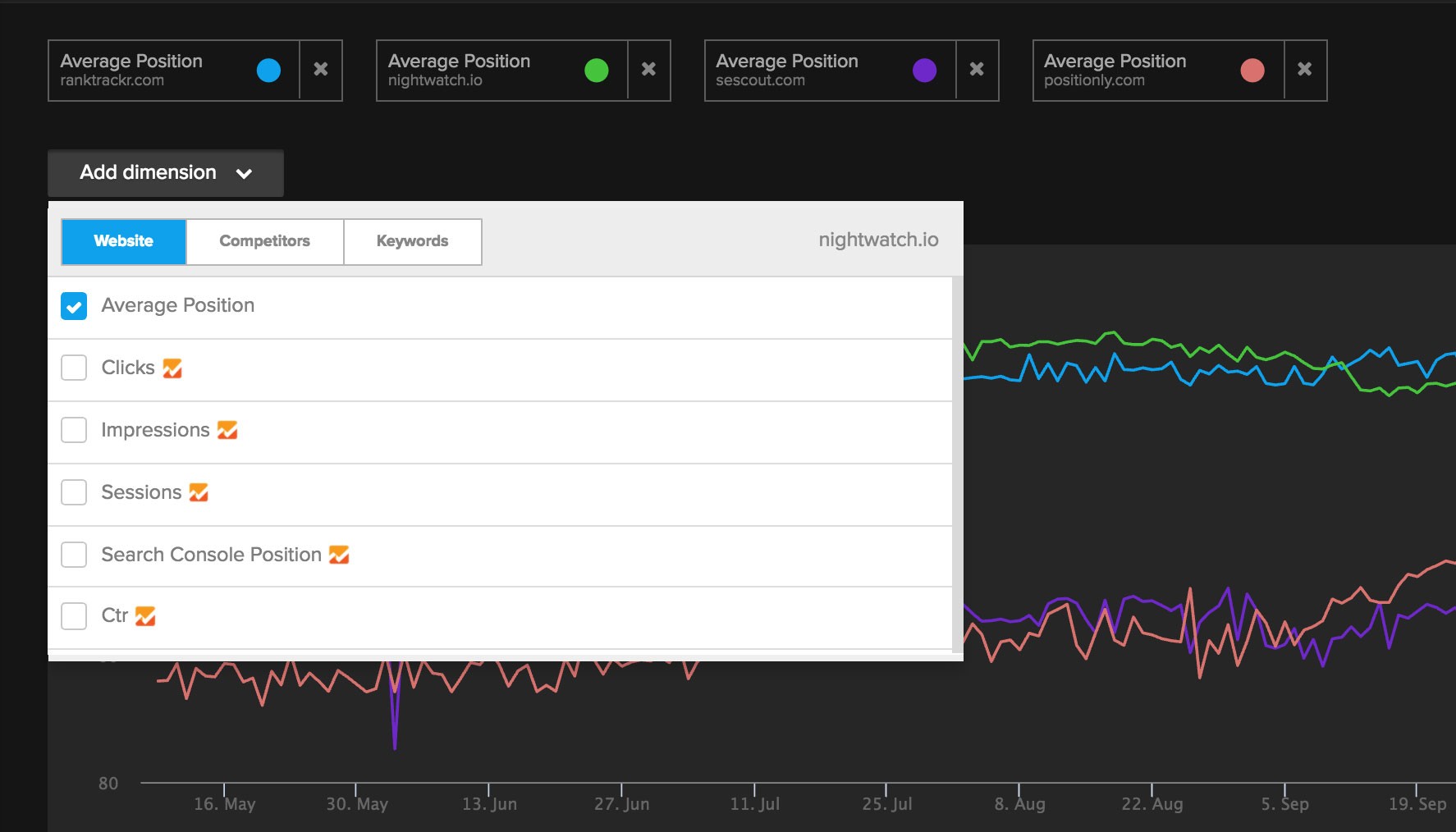
Additionally, you can save the graph and easily navigate to it when you want to observe the changes.
Customizable as swiss-army knife
The philosophy behind RankTrackr has the same foundation, but with Nightwatch we wanted to take a step forward with making it even more customizable. In addition to customizable columns that are already available in RankTrackr (they allow you to customize the data that is shown in the keyword table), we made it possible to customize reports and dashboards as well.
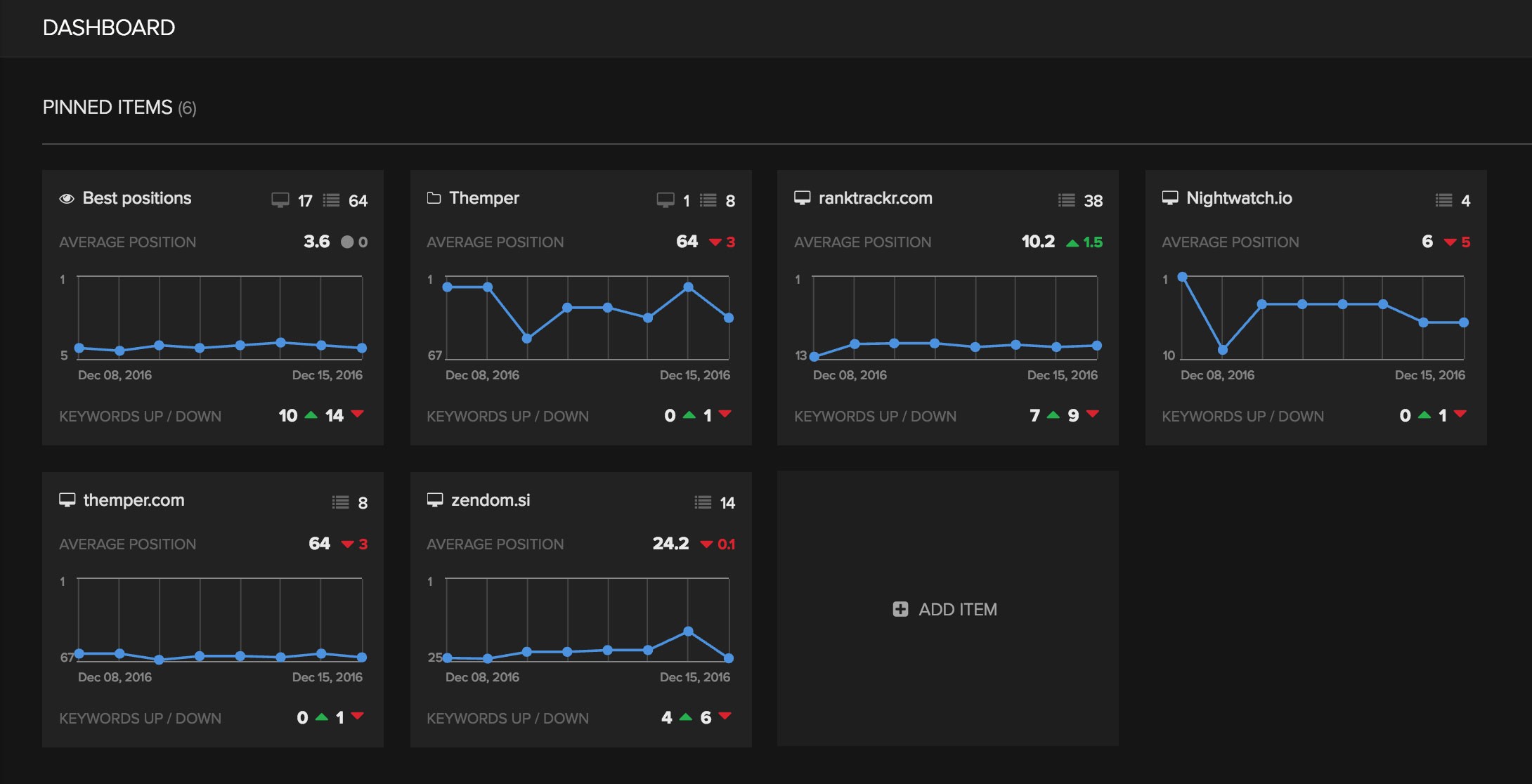
Besides that, you can combine “keyword views” and generate dynamic reports based on the keywords that match a specific criteria. A very powerful feature for those who are tracking large sets of data and want to keep track of a particular subset of keywords that have a specific behavior over time.
Becoming faster
The new technologies such as Ember.js and use of programming languages such as Scala and Elixir, allow us to provide blazer-speed data processing, faster load and navigation in our web-app. It also helps us to be more agile with the development, which means that it is taking us less time to add new features to the tool.
Today, we’re happy to announce beta invitations to Nightwatch - our new, next generation search visibility tracker.
Join us on our mission to create an intelligent, next generation search visibility tracker, that will make your work easier.
The first invitations will be sent out in early January 2017. Stay tuned until then!
